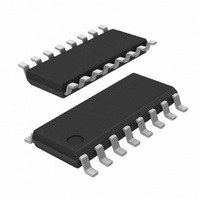SI3016-F-FS Silicon Laboratories Inc, SI3016-F-FS Datasheet - Page 17

SI3016-F-FS
Manufacturer Part Number
SI3016-F-FS
Description
IC ISOMODEM LINE-SIDE DAA 16SOIC
Manufacturer
Silicon Laboratories Inc
Type
Chipsetr
Datasheet
1.SI3016-F-FS.pdf
(50 pages)
Specifications of SI3016-F-FS
Package / Case
16-SOIC (3.9mm Width)
Data Format
V.90
Baud Rates
56k
Interface
Serial
Voltage - Supply
3.3V, 5V
Mounting Type
Surface Mount
Product
Modem Chip
Supply Current
0.3 mA
Maximum Operating Temperature
+ 70 C
Minimum Operating Temperature
0 C
Mounting Style
SMD/SMT
Lead Free Status / RoHS Status
Lead free / RoHS Compliant
provides current limiting while maintaining a transmit full
scale level of –1 dBm at TIP and RING. In this mode,
the dc termination will current limit before reaching
60 mA if the LIM bit is set.
Japan mode (DCT[1:0] = 01 b), shown in Figure 12, is a
lower voltage mode and supports a transmit full scale
level of –2.71 dBm. Higher transmit levels for DTMF
dialing are also supported. See "4.13. DTMF Dialing" on
page 19. The low-voltage requirement is dictated by
countries, such as Japan and Malaysia.
Low
Figure 13, is the lowest line voltage mode supported on
the Si3016, with a transmit full scale level of –5 dBm.
Higher transmit levels for DTMF dialing are also
supported. See "4.13. DTMF Dialing" on page 19. This
low-voltage mode is offered for situations that require
very low line voltage operation. It is important to note
that this mode should only be used when necessary, as
the dynamic range will be significantly reduced, and
thus the Si3016 will not be able to transmit or receive
large signals without clipping them.
Figure 11. CTR21 Mode I/V Characteristics
Figure 12. Japan Mode I/V Characteristics
10.5
Voltage
9.5
8.5
7.5
6.5
5.5
45
40
35
30
25
20
15
10
10
5
9
8
7
6
.015 .02 .025
.01 .02 .03 .04 .05 .06 .07 .08 .09
mode
Loop Current (A)
Japan DCT Mode
CTR21 DCT Mode
.03 .035
Loop Current (A)
(DCT[1:0] = 00b),
.04 .045 .05 .055
shown
.1
.11
.06
Rev. 1.0
in
4.9. DC Termination Considerations
Under certain line conditions, it may be beneficial to use
other dc termination modes not intended for a particular
world region. For instance, in countries that comply with
the CTR21 standard, improved distortion characteristics
can be seen for very low loop current lines by switching
to FCC mode. Thus, after going off-hook in CTR21
mode, the loop current monitor bits (LVCS[4:0]) may be
used to measure the loop current, and if LVCS[4:0] < 6,
it is recommended that FCC mode be used.
Additionally, for very low-voltage countries, such as
Japan and Malaysia, the following procedure should be
used to optimize distortion characteristics and maximize
transmit levels:
1. When first going off-hook, use the Low Voltage mode
2. Measure the loop current using the LVCS[4:0] bits.
3. If LVCS[4:0] ≤ 2, maintain the current settings, and
4. If LVCS[4:0] > 2 or < 6, switch to Japan mode, leave
5. If LVCS[4:0] ≥ 6, switch to FCC mode, set the VOL
Note: A single decision of dc termination mode following off-
Finally,
requirements for line seizure versus line hold. Japan
mode may be used to satisfy both requirements.
However, if a higher transmit level for modem operation
is desired, switch to FCC mode 500 ms after the initial
with the VOL bit set to 1.
proceed with normal operation.
the VOL bit set, and proceed with normal operation.
bit to 0, and proceed with normal operation.
hook is appropriate for most applications. However,
during PTT testing, a false dc termination I/V curve
may be generated if the dc I/V curve is determined fol-
lowing a single off-hook event.
10.5
9.5
8.5
7.5
6.5
5.5
5.0
10
Figure 13. Low Voltage Mode I/V
8
9
7
6
Australia
.01 .02 .03 .04 .05 .06 .07 .08 .09 .1 .11
Characteristics
has
Low Voltage Mode
Loop Current (A)
separate
dc
Si3016
termination
17













